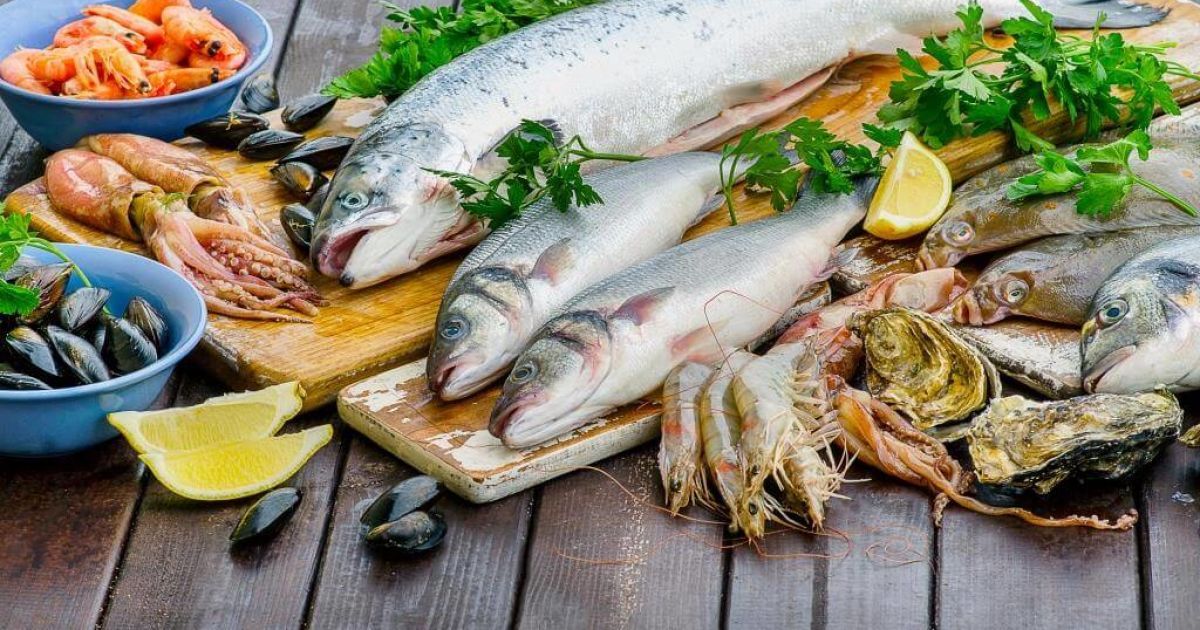What is fish good for?
The greatest value of fish is that, in addition to vitamins and iodine, it contains polyunsaturated fatty acids (omega-3 and omega-6), easily digestible protein.
That is why nutritionists advise to eat fish at least twice a week.
Fish is rich in vitamins (A, E, D), calcium, zinc, selenium, iron, phosphorus, magnesium.
Thanks to this composition, fish is useful for the joints, brain, and the entire human body.
It slows down cell aging, stimulates reproductive function, and lowers cholesterol.
Which fish is more useful - sea or river fish
If you ask: which of the fish is more useful, sea or river, the vast majority will answer - sea.
But few people would say that it is a fish caught in wild conditions.
Sea fish wins over river fish in the presence of fatty acids, but river fish has more protein and iron.
But in order to deliver sea fish to the shelves, it is usually frozen more than once, so it loses some of its useful properties.
Why not river fish?
Because rivers flowing near human settlements are catastrophically polluted.
Of course, the state of the seas and oceans is also disappointing, but there, harmful substances are mostly concentrated along the coastline.
And fishing is conducted in deep water, far from the shores.
But the fish on store shelves, even sea fish, is grown on farms where substances, growth stimulants, dyes, antibiotics, hormones, etc. are used for fattening.
What types of fish are most likely to be grown artificially?
All species of sturgeon, as most of them are listed in the Red Book and are not caught in the wild.
Almost all salmonids, especially trout and salmon.
Seabass is prohibited to be caught in the wild.
Carps, carp, carp.
Although it is not a sea fish, it is grown on artificial feed.
A significant amount of seafood — mussels, shrimps, sea scallops, lobsters with crawfish, oysters.
Tilapia and pangasius fish.
Not only are these types of fish already considered scavengers, they are treated with male sex hormones for the speed of growth and weight gain.
Which fish is the most useful for humans
The vast majority of nutritionists suggest choosing fish that grew in natural conditions, no matter where, whether in rivers, seas, or oceans.
Nutritionist Olena Malysheva offers the following list of fish grown in natural conditions:
Far Eastern salmon - grayling, chum, sockeye, cod, tench, char, whitefish.
This fish feeds on phytoplankton and krill, it contains the strongest antioxidant astaxanthin and Omega.
Cod.
Useful dietary fish, especially useful cod liver, from which fish oil is produced.
Pollack
The closest relative of cod and the most available wild fish, which has a lot of useful properties.
Pollock protein is absorbed by the human body almost completely, and in terms of the amount of iodine, it is simply impossible to find pollock.
Saira
This fish cannot be raised in captivity, while it contains many vitamins and omega fatty acids.
Herring.
Common herring is a valuable source of selenium, omega 3 and complete protein.
Mackerel - this fatty fish that is loved by many, has also never grown in captivity, and has all the advantages of wild fish.
Flounder.
It is flounder that contains more omega 3 than salmon.
This fish is recommended to be consumed in the postoperative period for quick recovery.
Hake, whiting, flounder, turbot, capelin, sardines.
The best fish among river fish are pike and perch.
They did not learn how to artificially breed squid from seafood.
On sale, you can find imported squid fillets, which, due to their chemical processing, are better not to buy.
Wild fish usually have large fins and unevenly colored meat.
But you need to be careful, fish can be treated with chemicals, pumped with water, dyed, re-frozen and thawed.
Read also:
Why can't you cook food in aluminum foil?
How not to buy bananas with pesticides: what the stickers on the fruit mean
